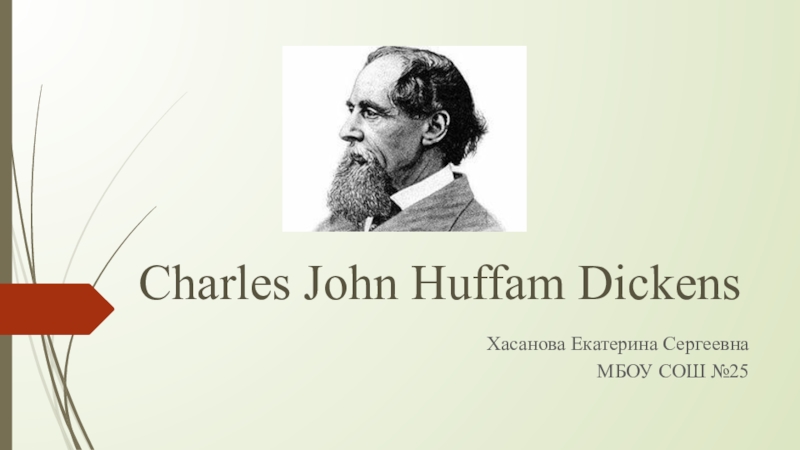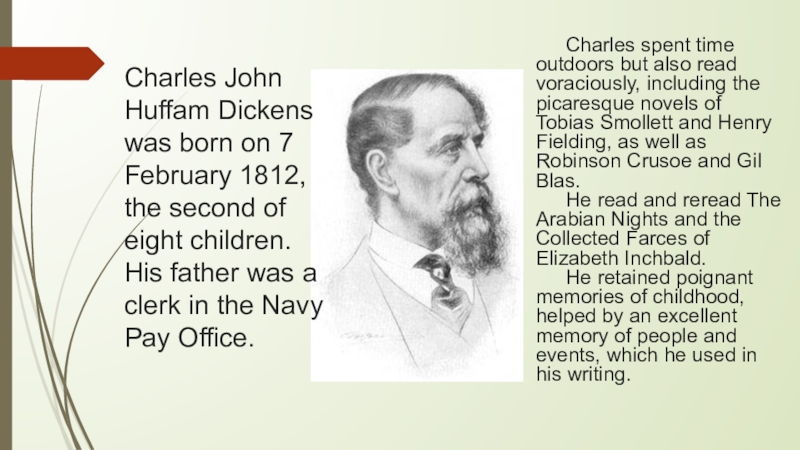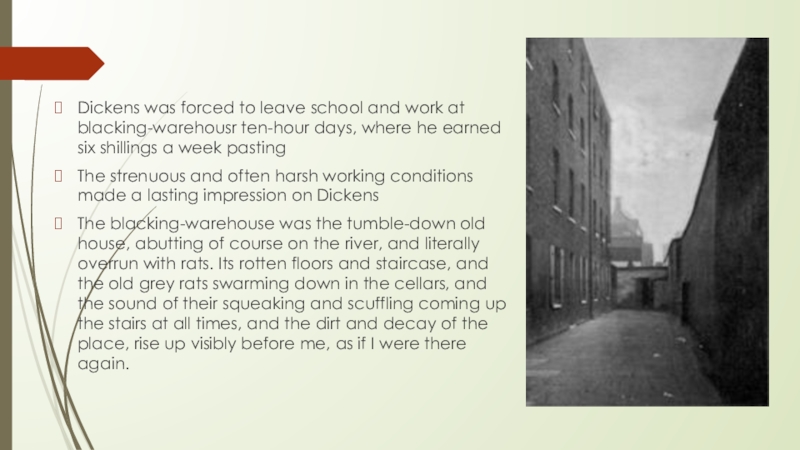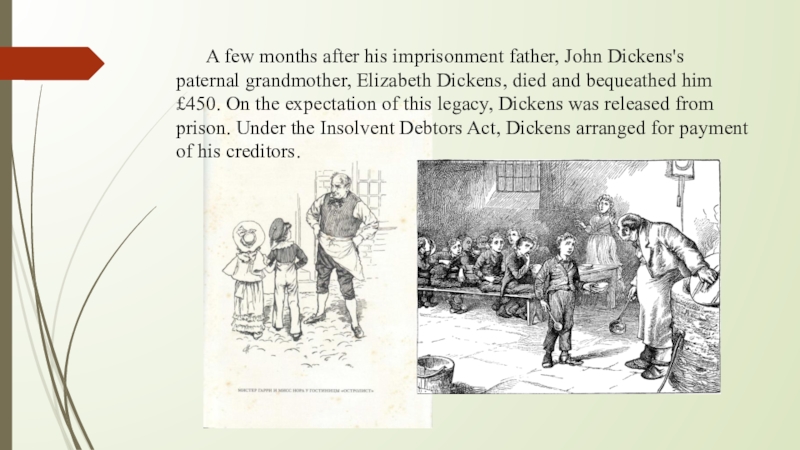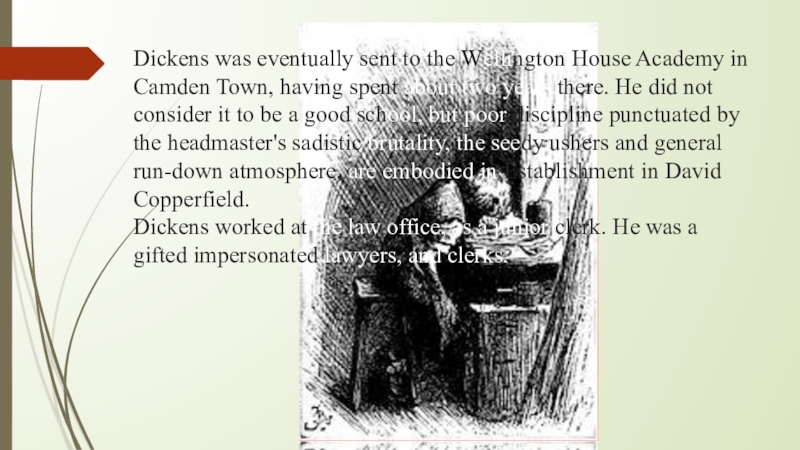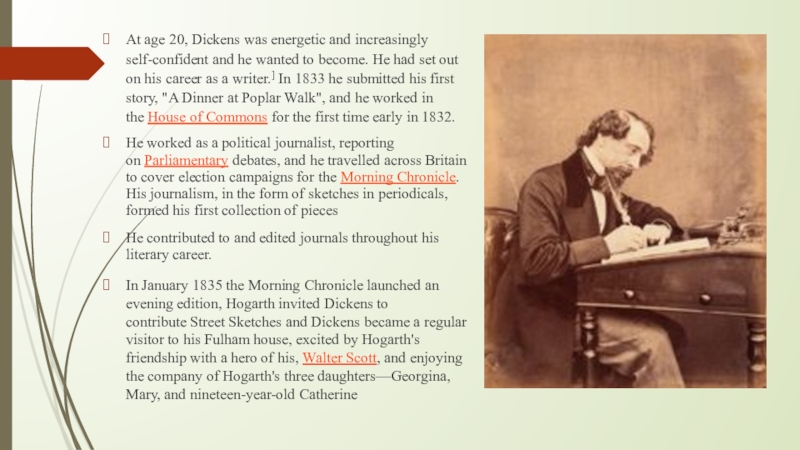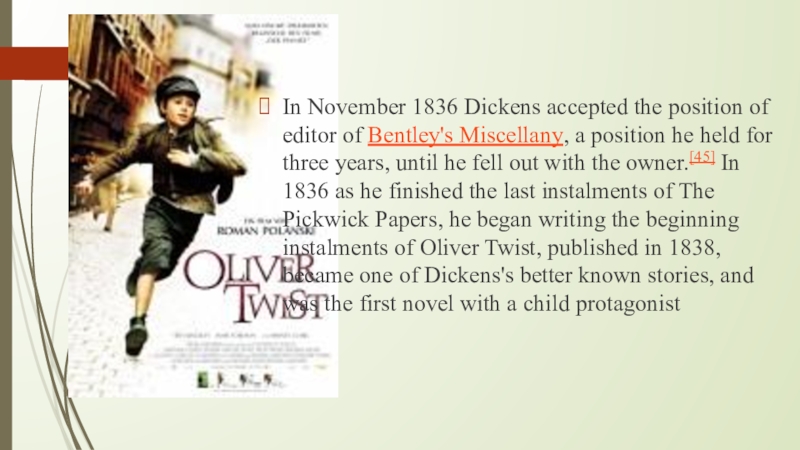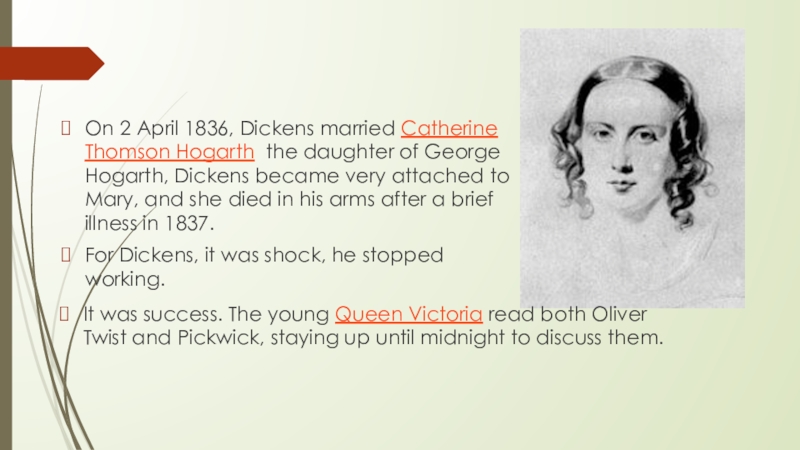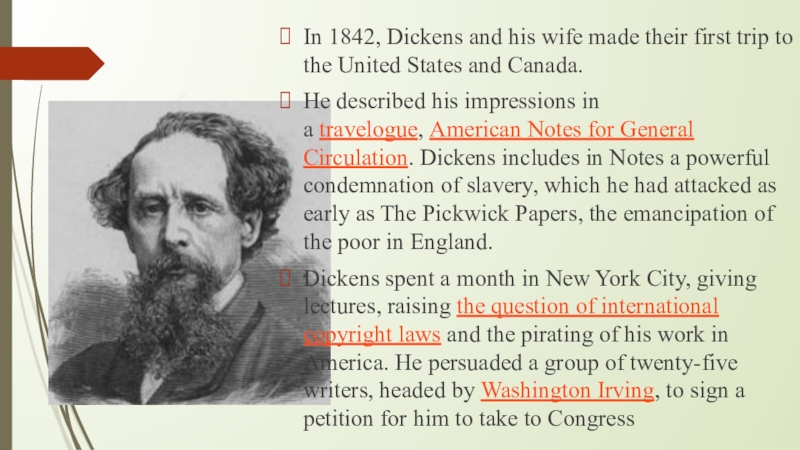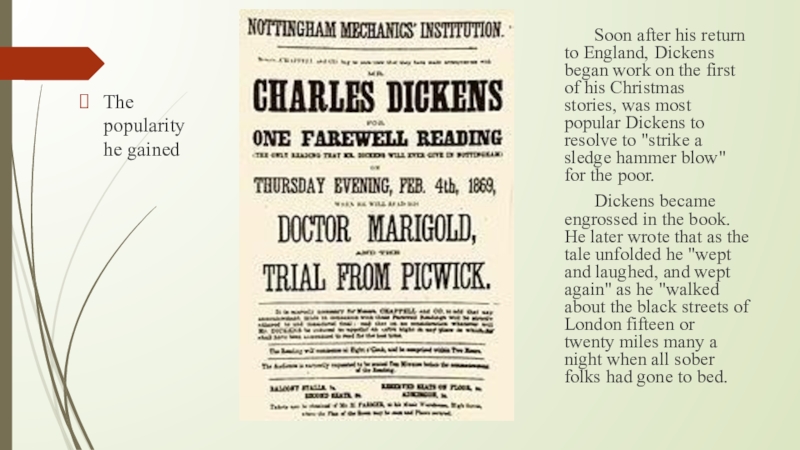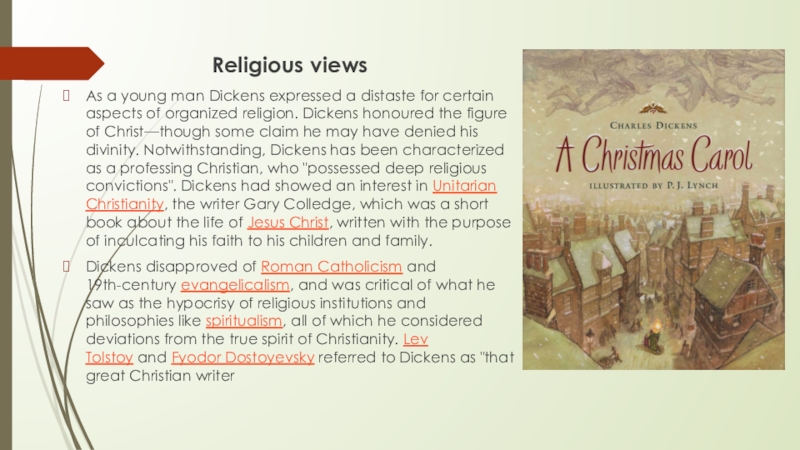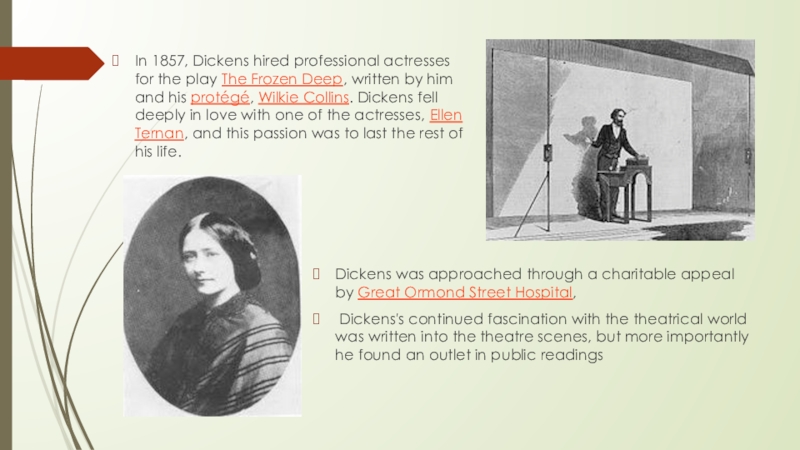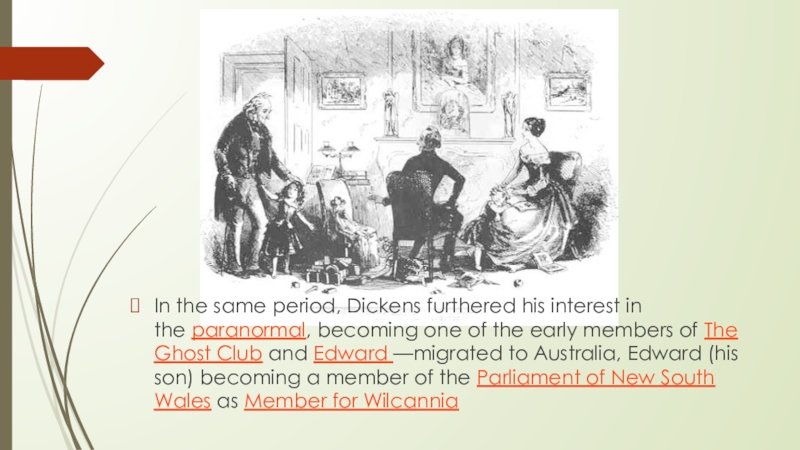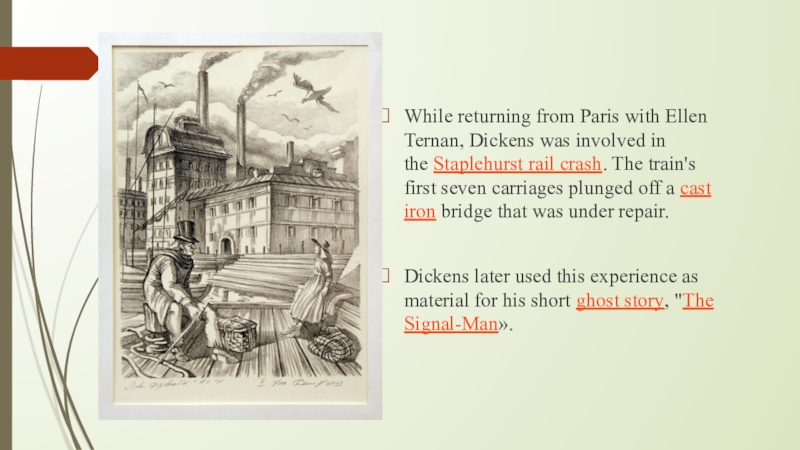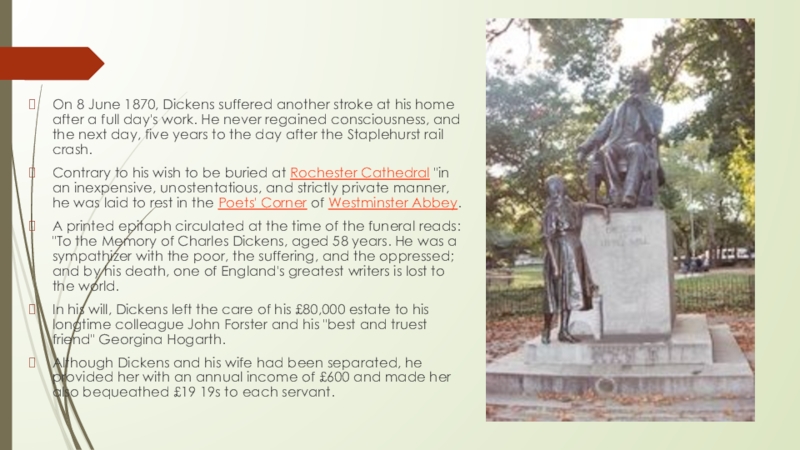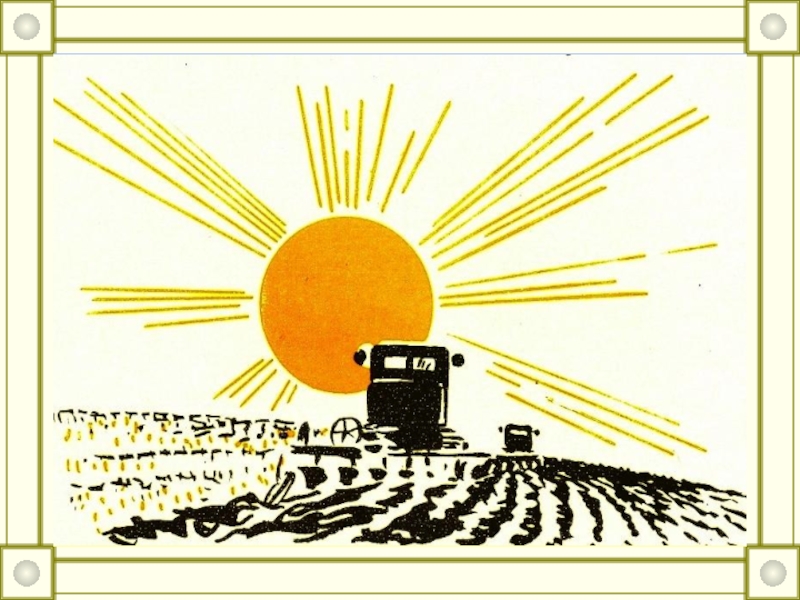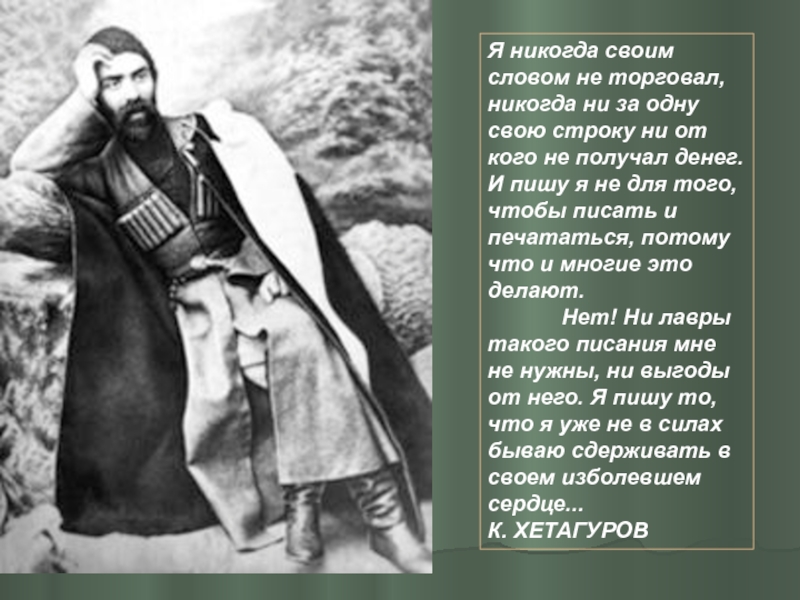- Главная
- Разное
- Образование
- Спорт
- Естествознание
- Природоведение
- Религиоведение
- Французский язык
- Черчение
- Английский язык
- Астрономия
- Алгебра
- Биология
- География
- Геометрия
- Детские презентации
- Информатика
- История
- Литература
- Математика
- Музыка
- МХК
- Немецкий язык
- ОБЖ
- Обществознание
- Окружающий мир
- Педагогика
- Русский язык
- Технология
- Физика
- Философия
- Химия
- Шаблоны, фоны, картинки для презентаций
- Экология
- Экономика
Презентация, доклад по английскому языку Чарльз Диккенс
Содержание
- 1. Презентация по английскому языку Чарльз Диккенс
- 2. Charles John Huffam Dickens was born on
- 3. Dickens was forced to leave school and
- 4. A few months after his imprisonment father,
- 5. Dickens was eventually sent to the Wellington
- 6. At age 20, Dickens was energetic and
- 7. In November 1836 Dickens accepted the position
- 8. On 2 April 1836, Dickens married Catherine Thomson
- 9. In 1842, Dickens and his wife made
- 10. The popularity he gained Soon after his
- 11. Religious viewsAs a young man Dickens expressed
- 12. Dickens was approached through a charitable appeal
- 13. In the same period, Dickens furthered his
- 14. While returning from Paris with Ellen Ternan,
- 15. On 8 June 1870, Dickens suffered another
Слайд 2Charles John Huffam Dickens was born on 7 February 1812, the
Charles spent time outdoors but also read voraciously, including the picaresque novels of Tobias Smollett and Henry Fielding, as well as Robinson Crusoe and Gil Blas.
He read and reread The Arabian Nights and the Collected Farces of Elizabeth Inchbald.
He retained poignant memories of childhood, helped by an excellent memory of people and events, which he used in his writing.
Слайд 3Dickens was forced to leave school and work at blacking-warehousr ten-hour
The strenuous and often harsh working conditions made a lasting impression on Dickens
The blacking-warehouse was the tumble-down old house, abutting of course on the river, and literally overrun with rats. Its rotten floors and staircase, and the old grey rats swarming down in the cellars, and the sound of their squeaking and scuffling coming up the stairs at all times, and the dirt and decay of the place, rise up visibly before me, as if I were there again.
Слайд 4 A few months after his imprisonment father, John Dickens's paternal grandmother,
Слайд 5Dickens was eventually sent to the Wellington House Academy in Camden
Слайд 6At age 20, Dickens was energetic and increasingly self-confident and he
He worked as a political journalist, reporting on Parliamentary debates, and he travelled across Britain to cover election campaigns for the Morning Chronicle. His journalism, in the form of sketches in periodicals, formed his first collection of pieces
He contributed to and edited journals throughout his literary career.
In January 1835 the Morning Chronicle launched an evening edition, Hogarth invited Dickens to contribute Street Sketches and Dickens became a regular visitor to his Fulham house, excited by Hogarth's friendship with a hero of his, Walter Scott, and enjoying the company of Hogarth's three daughters—Georgina, Mary, and nineteen-year-old Catherine
Слайд 7In November 1836 Dickens accepted the position of editor of Bentley's Miscellany,
Слайд 8On 2 April 1836, Dickens married Catherine Thomson Hogarth the daughter of
For Dickens, it was shock, he stopped working.
It was success. The young Queen Victoria read both Oliver Twist and Pickwick, staying up until midnight to discuss them.
Слайд 9In 1842, Dickens and his wife made their first trip to
He described his impressions in a travelogue, American Notes for General Circulation. Dickens includes in Notes a powerful condemnation of slavery, which he had attacked as early as The Pickwick Papers, the emancipation of the poor in England.
Dickens spent a month in New York City, giving lectures, raising the question of international copyright laws and the pirating of his work in America. He persuaded a group of twenty-five writers, headed by Washington Irving, to sign a petition for him to take to Congress
Слайд 10The popularity he gained
Soon after his return to England, Dickens
Dickens became engrossed in the book. He later wrote that as the tale unfolded he "wept and laughed, and wept again" as he "walked about the black streets of London fifteen or twenty miles many a night when all sober folks had gone to bed.
Слайд 11Religious views
As a young man Dickens expressed a distaste for certain
Dickens disapproved of Roman Catholicism and 19th-century evangelicalism, and was critical of what he saw as the hypocrisy of religious institutions and philosophies like spiritualism, all of which he considered deviations from the true spirit of Christianity. Lev Tolstoy and Fyodor Dostoyevsky referred to Dickens as "that great Christian writer
Слайд 12Dickens was approached through a charitable appeal by Great Ormond Street Hospital,
Dickens's continued fascination with the theatrical world was written into the theatre scenes, but more importantly he found an outlet in public readings
In 1857, Dickens hired professional actresses for the play The Frozen Deep, written by him and his protégé, Wilkie Collins. Dickens fell deeply in love with one of the actresses, Ellen Ternan, and this passion was to last the rest of his life.
Слайд 13In the same period, Dickens furthered his interest in the paranormal, becoming
Слайд 14While returning from Paris with Ellen Ternan, Dickens was involved in
Dickens later used this experience as material for his short ghost story, "The Signal-Man».
Слайд 15On 8 June 1870, Dickens suffered another stroke at his home
Contrary to his wish to be buried at Rochester Cathedral "in an inexpensive, unostentatious, and strictly private manner, he was laid to rest in the Poets' Corner of Westminster Abbey.
A printed epitaph circulated at the time of the funeral reads: "To the Memory of Charles Dickens, aged 58 years. He was a sympathizer with the poor, the suffering, and the oppressed; and by his death, one of England's greatest writers is lost to the world.
In his will, Dickens left the care of his £80,000 estate to his longtime colleague John Forster and his "best and truest friend" Georgina Hogarth.
Although Dickens and his wife had been separated, he provided her with an annual income of £600 and made her also bequeathed £19 19s to each servant.
